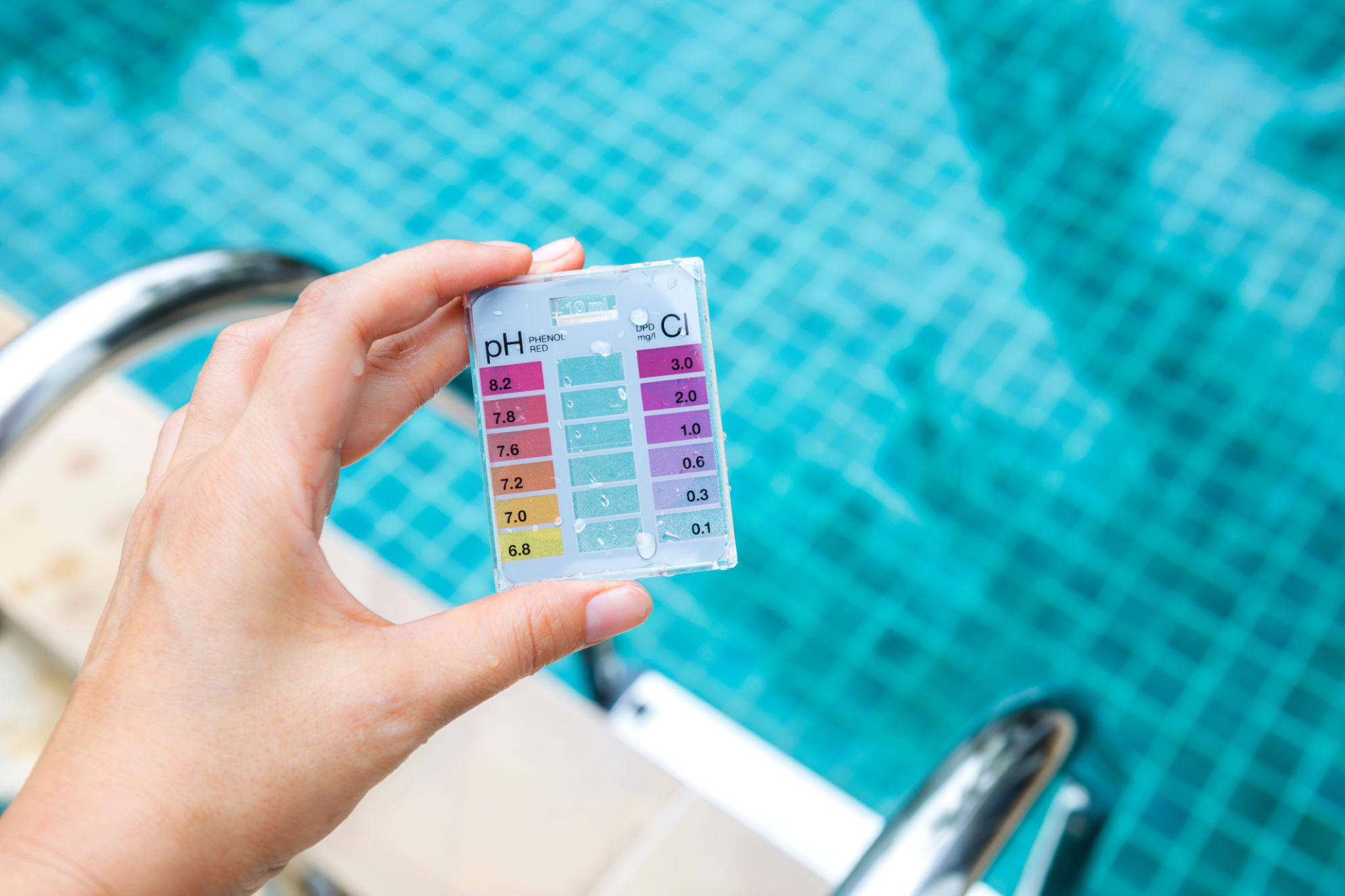Understanding Pool Chemical Balancing for a Sparkling Clean Pool
Introduction to Pool Chemical Balancing
Maintaining a sparkling clean pool requires more than just skimming leaves and debris. A crucial aspect of pool maintenance is achieving the right chemical balance. Proper chemical balancing ensures the water is safe for swimmers, prevents damage to the pool structure, and keeps the water clear and inviting.

Understanding pH Levels
The pH level of your pool water is one of the most important factors in chemical balancing. It measures how acidic or alkaline the water is, on a scale from 0 to 14. Ideally, you want your pool's pH level to be between 7.2 and 7.8. This range is slightly alkaline, which helps protect pool equipment and ensures swimmer comfort.
If the pH level is too low (acidic), it can cause corrosion of metal fixtures and skin irritation for swimmers. Conversely, if the pH is too high (alkaline), it can lead to scaling on the pool surfaces and cloudy water.
The Role of Chlorine
Chlorine is a critical component of pool chemical balancing. It acts as a disinfectant, killing harmful bacteria and algae that can thrive in pool water. The ideal chlorine level for a pool is between 1.0 and 3.0 parts per million (ppm). Regular testing is essential to maintain these levels, as chlorine can be depleted by sunlight, debris, and heavy pool usage.

Stabilizing Your Pool
To prevent chlorine from dissipating too quickly, especially in outdoor pools, a stabilizer like cyanuric acid is often used. This compound helps protect chlorine from being broken down by UV rays, ensuring it remains effective for longer periods. The recommended level of cyanuric acid in pool water is between 30 and 50 ppm.
Importance of Alkalinity
Total alkalinity (TA) refers to the concentration of alkaline substances in the water, which helps buffer pH fluctuations. A balanced alkalinity level stabilizes the pH and should be maintained between 80 and 120 ppm. If alkalinity is too low, pH levels can swing dramatically; if too high, it can lead to cloudy water and scaling.

Calcium Hardness
Calcium hardness refers to the amount of dissolved calcium in your pool water. Maintaining a proper level of calcium hardness (200-400 ppm) helps prevent corrosion of plaster surfaces and scaling. Low calcium levels can lead to etching of pool surfaces, while high levels cause cloudy water and scale buildup.
Routine Testing and Adjustments
Regular testing of your pool's chemical levels is vital to ensure a balanced environment. Using a reliable test kit, check pH, chlorine, alkalinity, and calcium hardness levels at least once a week. Adjustments can be made using various chemicals like soda ash for increasing pH or muriatic acid for lowering it.
Conclusion
Understanding and maintaining proper chemical balance in your pool is key to ensuring its longevity and the health and safety of swimmers. By routinely monitoring chemical levels and making necessary adjustments, you can enjoy a crystal-clear pool all season long.
